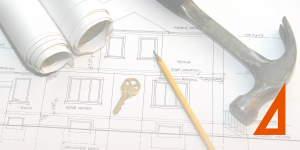10 Steps to Structural Integrity Compliance: NJ S2760/A4384 Law
In today’s ever-evolving regulatory landscape, maintaining the structural integrity of buildings is not just a legal obligation but a fundamental aspect of ensuring safety and longevity. The New Jersey S2760/A4384 structural integrity law mandates rigorous standards for property owners and Community Association Institutes (CAIs) to safeguard against structural deficiencies. Compliance with these laws is crucial, as it not only protects the occupants but also preserves the value and functionality of the properties.
Navigating these requirements can be daunting, but with a strategic approach, property owners and CAIs can effectively manage and adhere to the mandates. This guide provides a detailed roadmap to achieving structural integrity compliance, outlining essential steps from initial assessments to continuous improvement.
By following this comprehensive plan, stakeholders can ensure their properties meet the highest standards of safety and durability, while also mitigating risks and legal liabilities.
Whether you are a property owner looking to understand your obligations or a CAI seeking best practices for compliance, this guide equips you with the knowledge and tools necessary to meet the demands of the New Jersey structural integrity law.
Additionally, we highlight the professional support available from experts like Criterium-Hanna Engineers, who are licensed and seasoned principal engineers dedicated to helping you navigate these regulatory requirements with confidence.
1. Understand the New Jersey S2760/A4384 Law

- Familiarize with Requirements: Thoroughly read and understand the law’s requirements, including inspection intervals, documentation, and remediation protocols.
- Consult Legal and Engineering Experts: Engage legal counsel and structural engineers to interpret the law and understand its implications.
2. Initial Structural Assessments

- Hire Qualified Professionals: Employ licensed structural engineers to conduct initial assessments of all relevant properties to ensure adherence to the law.
- Initiate Detailed Inspections: Perform thorough inspections to identify any structural deficiencies, paying particular attention to areas specified by the law to maintain adherence.
3. Develop an Action Plan

- Prioritize Repairs: Based on the assessment, prioritize repairs and remediation efforts for properties with the most critical issues. This helps the overall flow and success of the plan.
- Budget Allocation: Allocate budget and resources for the necessary inspections, repairs, and ongoing maintenance aimed at structural integrity compliance.
- Timeline and Milestones: Establish a clear timeline with milestones to track progress towards full adherence.
4. Execute Remediation and Maintenance

- Implement Repairs: Carry out necessary repairs and remediation to address identified structural deficiencies and ensure conformance.
- Use Certified Contractors: Ensure that all repair and remediation work is done by certified and experienced contractors in line with adherence requirements.
5. Regular Monitoring and Maintenance

- Schedule Regular Inspections: Set up a schedule for regular structural inspections as mandated by the law to maintain adherence.
- Ongoing Maintenance: Implement an ongoing maintenance plan to ensure structural integrity is maintained in accordance with the law.
6. Documentation and Reporting

- Maintain Records: Keep detailed records of all inspections, repairs, and maintenance activities as part of the adherence process.
- Submit Reports: Ensure timely submission of required reports to relevant authorities to demonstrate conformance.
7. Communication and Education

- Inform Stakeholders: Regularly update property owners, tenants, and community members about the adherence efforts and any necessary actions they need to take.
- Education Programs: Implement education programs to inform stakeholders about the importance of structural integrity and adherence requirements.
8. Engage with Community and Authorities

- Work with CAIs: Collaborate with Community Association Institutes to share best practices and resources for structural integrity compliance.
- Liaison with Authorities: Maintain open communication with local regulatory bodies to ensure alignment with adherence efforts and to get assistance when needed.
9. Risk Management

- Insurance Review: Review and update insurance policies to cover potential liabilities related to structural issues.
- Contingency Planning: Develop contingency plans for handling emergencies or unexpected structural failures.
10. Continuous Improvement

- Audit Adherence Efforts: Regularly audit adherence efforts to identify areas for improvement in maintaining structural integrity compliance.
- Stay Updated: Keep abreast of any changes to the law or new best practices in structural integrity management and adherence.
Professional Support
For expert assistance, consider engaging Criterium-Hanna Engineers, who are licensed and professional principal engineers in New Jersey. They offer comprehensive services to help property owners and CAIs comply with structural integrity laws, ensuring safety and adherence to regulations.

